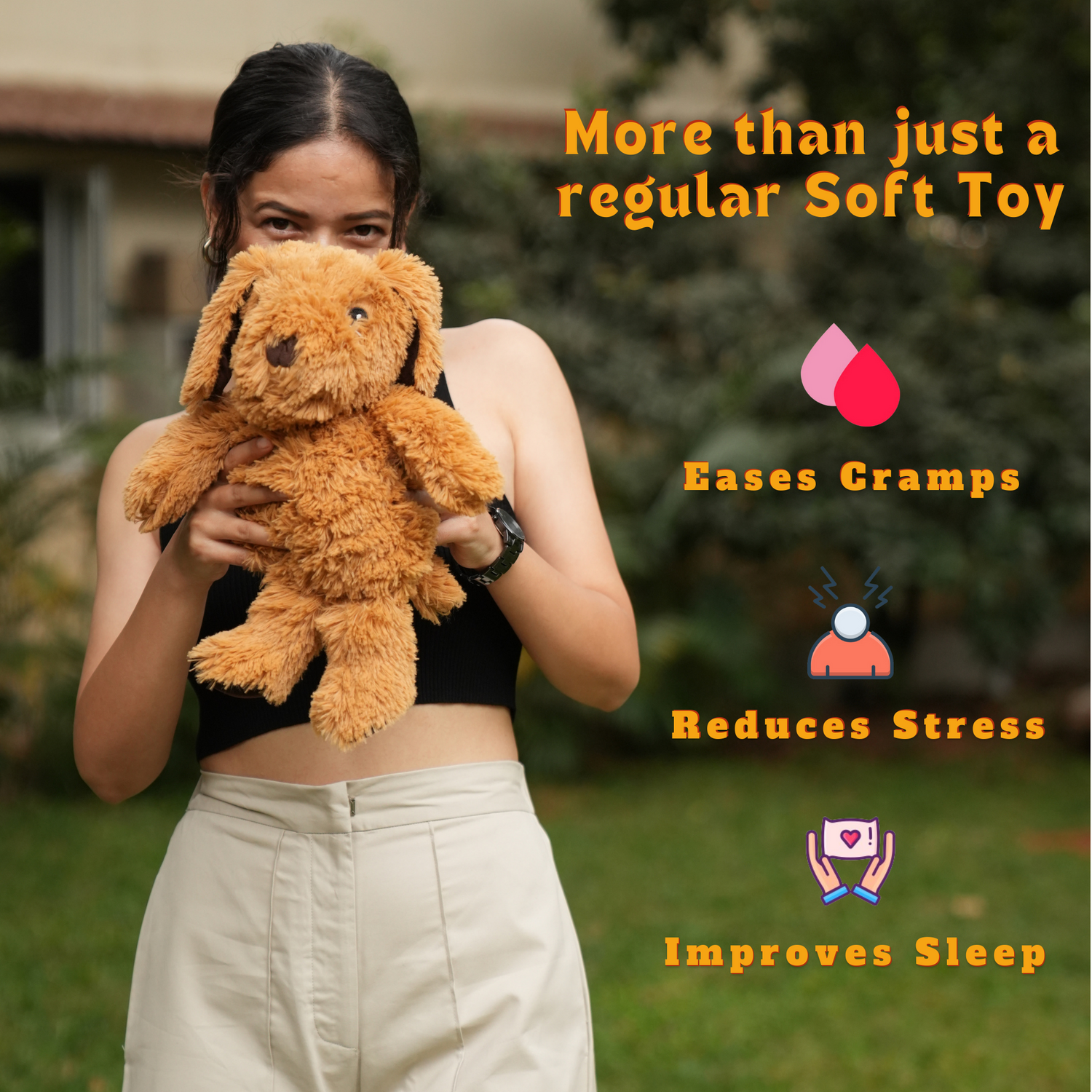Grounding exercises are so popular because they can be practiced at any time and anywhere.
When Should You Use Grounding Techniques?
Grounding is great in those moments where anxiety takes over. They can be utilised during panic attacks or whenever a situation gets overwhelming. At work, at home, or anywhere, really, grounding makes you better equipped with a tool to reach for those overwhelming feelings and make them somewhat more manageable.
Some Popular Grounding Techniques for Anxiety
So, let's get a little deeper into the most practical exercises for grounding. These simple techniques can redirect your attention and soothe your anxious mind.
The 5-4-3-2-1 Technique
This exercise reconnects with your senses and brings you back into the present moment. It is straightforward yet powerful, and it works by focusing on things you can see, hear, touch, smell, and taste.
This is how it works:
5 things you can see: Look around you and name five things you can see. It could be something as seemingly mundane as a lamp, a chair, or the trees hanging out in your window.
4 things you can feel: Pay attention to what you're feeling in your body. Is it cool on your skin? Are you feeling the texture of your clothes? A soft cushion beneath you?
3 things you can hear: Tune into the sounds around you. Maybe it's traffic noise, a clock ticking, or birds chirping.
2 things you can smell: Pay attention to any scents around you. You might notice a fresh smell from outside or a fragrance from your lotion.
1 thing you can taste: Pay attention to the taste in your mouth. This could be the taste of toothpaste or a flavor from the drink you had just before getting anxious.
These acts help bring your mind into the present and move it away from all those anxious thoughts.
2. Deep Breathing Exercise
Breathing is one of the most powerful ways by which the body's relaxation response can be activated. Anxiety usually causes shallow and fast breathing, which prolongs the feeling of stress. Deep breathing then helps to slow down the heart rate and calm the mind.
A very effective technique is called Box Breathing: Breathe in for four seconds, hold for four seconds, breathe out for four seconds, and hold again for four seconds. You do this several times until you feel more centered and relaxed.
Another easy deep breathing exercise is diaphragmatic breathing. Place one hand on your chest and the other on your belly. Inhale a good, deep breath in through your nose; your belly should expand and rise so that your chest doesn't move. Slowly exhale through your mouth. This works the diaphragm and tends to breathe slower and deeper.
3. Body Scan
A body scan will help you reconnect with your body by bringing awareness to every part of your physical self. This exercise can really help work tension and stress out of your muscles, which is a common place we hold tension when we're anxious.
Do this: Sit or lie in a comfortable position. Close your eyes and breathe in a few deep breaths.
Begin with your feet and mark in your mind where you feel tension. Tense or relaxed? Gradually work your way up your body, leg, hips, stomach, chest, arms, neck, and head. Allowing your attention to linger upon places that feel tight or painful.
Breathing through these areas helps alleviate some of the physical symptoms of anxiety: feeling tightness or racing heart.
4. Grounding Objects
Other times, the tactile sensations help bring you out of anxious dwelling thoughts. For example, it may be as simple as a small stone, a piece of soft fabric, or even a favorite perfume or essential oil. Holding or touching an object and focusing your mind on the texture, temperature, and feel of the object can bring you out of worried thoughts.
Tip: Find an object that you can carry with you and use when you feel anxious. It doesn't have to be large or ostentatious; the smallness or subtlety of something like a smooth stone or a small stress ball is actually what makes them useful.
5. Mental Grounding Exercises
Some mental grounding techniques shift your mind away from obsessive thinking by encouraging you to think logically or factually. Here are some suggestions:
Counting backward: Count backward from 100, decrementing by 3 each time (100, 97, 94, etc.). This activity can occupy your brain and carry you out of the spiral of worrisome thoughts.
Repeat something you know: Chant your favorite poem, song lyrics, or a quotation from your favorite book. Reciting something you know helps take your mind off your concern.
Name things in the room: Just start naming objects around you—"There is a chair, a lamp, a plant, a desk, a clock"—it can ground you by making you connect to your environment.
Why Grounding Techniques Work
Grounding techniques work by engaging the brain in activities that draw attention away from overwhelming emotions and onto tangible, real-world elements. The process of focusing on the body's senses or engaging in mental tasks interrupts the cycle of anxious thinking and creates a sense of control.
Scientifically, grounding would help activate the parasympathetic nervous system-the body's natural relaxation system, which counters the stress response caused by anxiety. Thus, it calms down a body that is usually quickened by increasing the rate of respiration, shallow breathing, and muscle tension.

Conclusion
Grounding techniques are simple, effective strategies to manage anxiety and reconnect to the present moment. From sensory exercises as in the 5-4-3-2-1 technique, through deep breathing practices, or mental grounding, these tools help reduce anxiety and bring a sense of calm. Making grounding a normal part of self-care routines will help a person manage anxiety better and in control of their emotions.
Remember, anxiety can feel like an overwhelming time in life, but there are ways to traverse it. If you ever get to that point where you feel like it is getting a bit too much to handle by yourself, then seeking support from a therapist is the best next step.
If you want to read up more on anxiety, these are some great resources
https://www.verywellmind.com/this-is-your-brain-on-anxiety-8733665
https://www.healthline.com/health/anxiety-relapses-the-temptation-of-bad-habits
https://www.mind.org.uk/information-support/types-of-mental-health-problems/anxiety-and-panic-attacks/self-care/
More on grounding techniques
https://www.calm.com/blog/5-4-3-2-1-a-simple-exercise-to-calm-the-mind
https://www.lpft.nhs.uk/young-people/lincolnshire/about-us/whats-new/grounding-activity
https://www.healthline.com/health/333-rule-anxiety
Worksheet to keep close
https://www.therapistaid.com/therapy-worksheet/grounding-techniques
https://www.teacherspayteachers.com/Product/Behavior-Tool-54321-Grounding-Technique-Use-with-story-Kona-His-Hard-Shell-7691971


